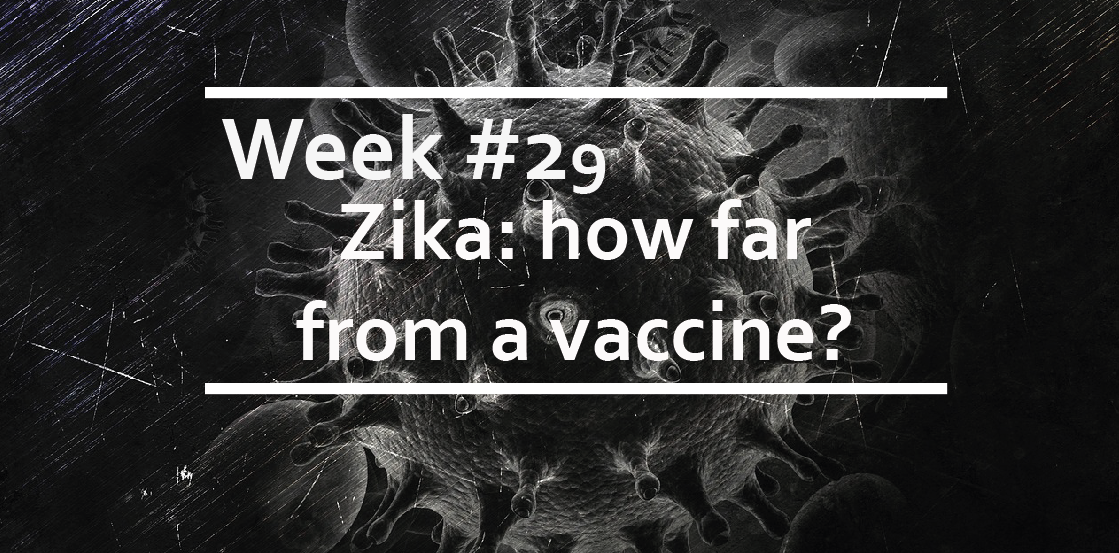Zika: how far from a vaccine?
About two years after the largest epidemics of Zika virus (ZIKV), how far are we from a vaccine? In a recent minireview on Cell Host & Microbe, Shan et al review the current progress in ZIKV vaccination. The good news is that some candidates are indeed in the pipeline. However, the most advanced ones are still in phase I/II of clinical trials, and most have been tested only in mice or non-human primates. In addition, many unanswered question on the biology of ZIKV and other flaviviruses, the interaction with the host immune response, and the consequences of their serological similarities still obstacle the development of a safe candidate. Fortunately, a sustained effort from governments and scientists across the world has kept the momentum well after the end of the epidemics, aware that ZIKV is very likely to come back.
Inactivated, subunit, and live-attenuated vaccines
An inactivated Puerto Rico strain of ZIKV showed protection in mice and human primates, and only mild side effect in healthy human recipients. Development of neutralising antibody titres was fairly mild, but transfer of purified IgG from vaccinated people with neutralising antibody titres >1:100 protected mice from infection.
Subunits vaccines focus on ZIKV PrM and E proteins, either expressed within viral vectors, or as recombinant plasmids, or in purified virus-like particles (VLPs). Phase I studies from different labs have shown development of neutralising antibodies and also a T cell response. While studies in mice and non-human primates sound promising, with protection from maternal transmission of ZIKV during pregnancy, the duration over time of a protective response remains unclear, and antibody titres start in non-human primates have been shown to fade within 1 year.
Engineering of attenuating mutations or chimeric flaviviruses expressing ZIKV PrM/E have also been testes as live-attenuated vaccine approaches. 10-20 nucleotide deletions in the 3’ UTR of the naturally attenuated Cambodia strain FSS13025 of ZIKV induce neutralising antibody titres >1:1,000 in non-human primates, and exhibit a very good safety profile.
While the best results seem to come from the live attenuated vaccines, which are known to generate the strongest and long lasting immune response, this kind of vaccine may not be a first choice approach against a virus that may need to be administered during pregnancy or to small children. Other formulations notoriously require boosting, which is not an easy option to implement in a number of ZIKV affected settings.
Still some knowledge gaps
Vaccines against flaviviruses are astonishingly different in their effectiveness and safety. While the yellow fever vaccine, for instance, remains one of the best vaccine ever developed, the recently approved vaccine against dengue only offers a 30-60% efficacy and increases the risk of hospitalisation in children that are less than 9 years old. The difference is in the existence of different dengue serotypes (30-35% amino acid variation) that not only require a tetravalent formulation, but also need similarly high neutralising titres for all serotype to avoid antibody dependent enhancement (ADE).
Fortunately ZIKV strains only differ by 5% of aminoacid sequence and as such belong to a unique serotype, making the design of a vaccine less challenging. However, what is the impact of a ZIKV vaccine on a population that has been exposed to otherflaviviruse is unclear. Although previous exposure to dengue doesn’t seem to cause ADE following infection with ZIKV in vivo, however previous exposure to ZIKV has been shown to increase dengue severity in non-human primates. Would this be true also for vaccine exposure? An accurate diagnostic test able to specifically distinguish previous exposure to different flaviviruses could help deciding which individual should be given a vaccine, but structural similarities between different flaviviruses is making the development of serological diagnostic extremely complex.
Immune correlates of protection are also not entirely clear in the contest of flavivirus infection. While neutralising antibody titres above 1:10 have been establishes as correlates of protection for most flavivirus vaccines, this doesn’t seem to be the case for dengue, where not only the steady concentration of neutralising antibody has to be fairly high, but also in vitro measurements don’t always match with neutralisation in vivo. Also, for flaviviruses, as well as for many other viruses, it has been hard to recapitulate protection between murine, non-human primate, and human studies.
Additionally, and as the authors point out, ZIKV is know for causing Guillain-Barre syndrome (GBS) in 1 to 4-5000 infected adults: if this is mediated by an immune response against the virus itself, we need to make sure it won’t be caused in response to a vaccine. And how does protection of an individual correlate with protection of in utero transmitted virus?
All these relevant points need to be address in parallel to vaccine development, and they may also help the design of an effective ZIKV vaccine strategy. A sustained effort to develop appropriate models and to understand the biology of ZIKV and of its interaction with the human host needs to be encouraged and prioritized.




